Boroondara Reconciliation Strategy 2022–2026
Boroondara Reconciliation Strategy 2022–2026
Thank you
The City of Boroondara would like to thank and acknowledge the Wurundjeri Woi-wurrung Cultural Heritage Aboriginal Corporation. We would also like to thank all the Aboriginal and Torres Strait Islander peoples and organisations who generously gave their time throughout the consultations for our Boroondara Reconciliation Strategy. We are grateful to everyone who shared their ideas and aspirations for reconciliation in Boroondara.
We also want to thank others who provided their reflections and ideas, including:
- community organisations
- service providers
- the Boroondara community.
Thank you to the Aboriginal and Torres Strait Islander sector in the Inner East for providing us with guidance to develop our Boroondara Reconciliation Strategy. Their support made sure we heard from a diverse range of Aboriginal and Torres Strait Islander peoples.
Acknowledgement of Traditional Owners
The City of Boroondara acknowledges the Wurundjeri Woi-wurrung people as the Traditional Owners and original custodians of this land. We pay our respects to their Elders past and present.
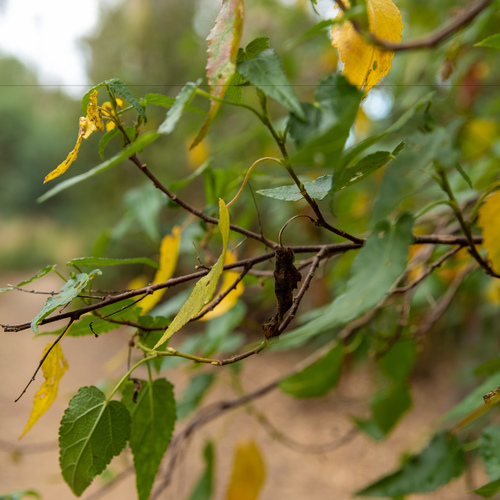
Our progress
Read about our progress on actions in the Reconciliation Strategy.
More information
To stay up to date on our Boroondara Reconciliation Strategy, sign up to our mailing list. If you have questions or feedback about our Strategy, contact our Social Inclusion Policy and Project Officer, Liz O'Loughlin on (03) 9278 4693 or [email protected].
Read the original Boroondara Reconciliation Strategy 2022–2026 and the Implementation Plan
Table of contents
About the Boroondara Reconciliation Strategy
About the Boroondara Reconciliation Strategy
The Boroondara Reconciliation Strategy (the Strategy) formalises Council’s commitment to reconciliation in Boroondara.
Reconciliation is an ongoing journey that aims to bring together and strengthen relationships between Aboriginal and Torres Strait Islander peoples and the wider Australian community. It’s about helping all Australians understand our shared history and how the past affects the lives of Aboriginal and Torres Strait Islander peoples today. Reconciliation is about respecting and valuing Aboriginal and Torres Strait Islander heritages and peoples. It aims to achieve equality in life expectancy, education, employment and other areas of disadvantage.
We developed our Strategy by listening to local Aboriginal and Torres Strait Islander peoples and organisations. This helped us understand the role Council and our community can play in reconciliation. Our Strategy is based on the understanding that to progress reconciliation, we must continue to build and develop respectful, flexible and genuine relationships. We must also make sure that these relationships are built on cultural understanding and cooperation with Aboriginal and Torres Strait Islander peoples and organisations. We heard that it’s important for truth telling to be central to the reconciliation healing process. This includes acknowledging the impacts of colonisation on Aboriginal and Torres Strait Islander peoples in Victoria.
The Strategy provides a 4-year vision and action plan for implementing reconciliation initiatives with Wurundjeri Woi-wurrung Cultural Heritage Aboriginal Corporation (WWCHAC) and other stakeholders in the Aboriginal and Torres Strait Islander sector and the broad community.
As we continue our reconciliation journey, we are committed to listening and learning from WWCHAC and all local Aboriginal and Torres Strait Islander peoples and other stakeholders to implement this Strategy.
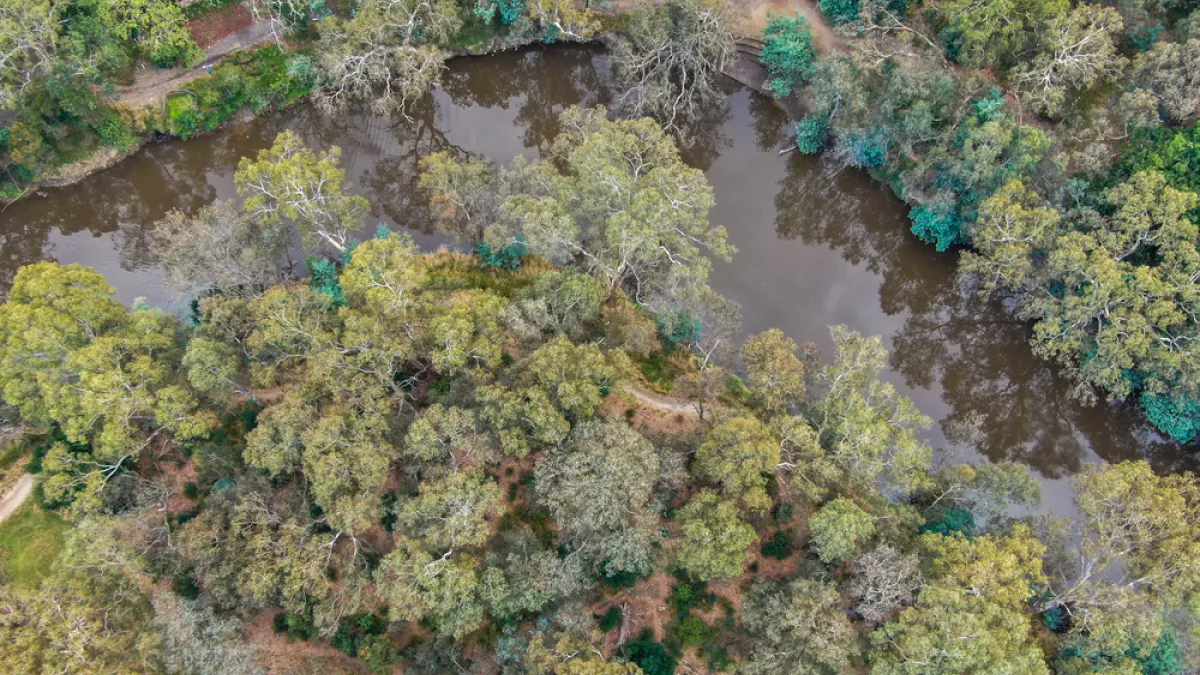
Pagination links
Our vision
Our vision
The vision of our Strategy is to create a welcoming community where the histories, cultures, knowledges, achievements and aspirations of Aboriginal and Torres Strait Islander peoples are acknowledged, respected, considered and celebrated. The vision of the Strategy is also to strengthen relationships with Aboriginal and Torres Strait Islander organisations and peoples so we can work together and with our broader community to progress reconciliation locally.
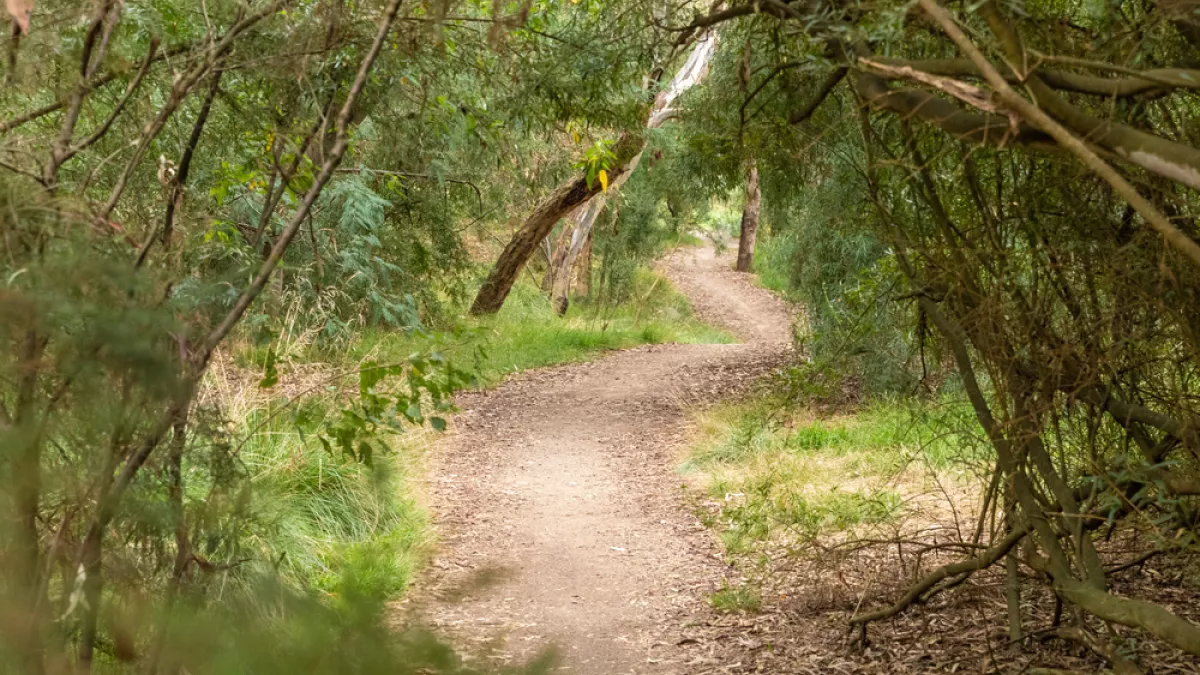
Pagination links
Traditional Owners of Boroondara
Traditional Owners of Boroondara
The area now known as the City of Boroondara is on the traditional lands of the Wurundjeri Woi-wurrung people in the inner-eastern suburbs of Melbourne. It includes:
- Ashburton
- Balwyn
- Balwyn North
- Camberwell
- Canterbury
- Deepdene
- Hawthorn
- Hawthorn East
- Kew
- Kew East
- parts of Glen Iris, Surrey Hills and Mont Albert.
The City of Boroondara’s name comes from the Woi-wurrung language. It means ‘where the ground is thickly shaded’. The Wurundjeri Woi-wurrung community has a strong historical, cultural and spiritual connection to their traditional lands and waterways. They continue the responsibilities of their ancestors to protect, preserve and manage the land and waterways in line with culture and traditions.
The Wurundjeri Woi-wurrung Cultural Heritage Aboriginal Corporation (WWCHAC) is formally recognised through the Aboriginal Heritage Act 2006 as the Traditional Owners for the land and waterways in Boroondara. As the Registered Aboriginal Party, the WWCHAC has important legislated roles and functions. It helps to manage and protect the Aboriginal cultural heritage of its recognised lands. This includes looking at Cultural Heritage Management Plans and Cultural Heritage Permit applications.
The WWCHAC also offers important services in the community, including:
- managing land and water, such as cultural burning, weed control and planting
- cultural practices for events, such as performing a Welcome to Country and smoking ceremonies
- cultural consultations to give feedback on projects being developed on its land
- education and cultural awareness specific to its heritage and culture
- language and place-naming advice.
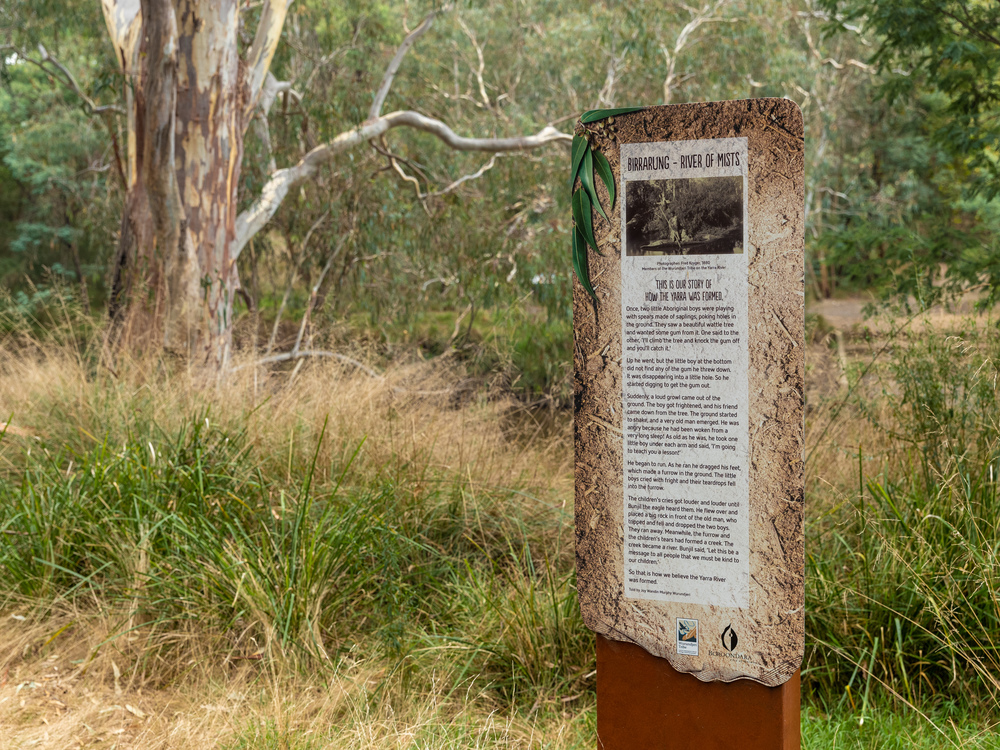
Pagination links
Our work so far
Our work so far
In the past, we have recognised Aboriginal and Torres Strait Islander cultures and heritages by adopting the:
- Recognising Indigenous Culture and Heritage Policy 2009–13
- Reconciliation Policy and Action Plan 2004–07
- Reconciliation Action Plan 2000–03.
We have listed some of the reconciliation actions we have taken over the past 5 years below.
- We hold a regular meeting between Council officers and representatives from the Wurundjeri Woi-wurrung Cultural Heritage Aboriginal Corporation (WWCHAC). At these meetings we plan joint projects and activities.
- We partner with the WWCHAC and other Aboriginal and Torres Strait Islander groups to deliver special projects and activities. This included the development and design of the Wurundjeri Trail at Chandler Reserve.
- We created an internal working group of staff at Council. This group plans ways for Council to recognise and celebrate Aboriginal and Torres Strait Islander histories and cultures.
- We hold an annual event to mark National Reconciliation Week (27 May to 3 June) or NAIDOC Week (first full week in July). This included launching the Wurundjeri Trail at Chandler Reserve in 2017 with the WWCHAC. We also delivered a special event for children and families in 2019 at the Greythorn Community Hub. This included educational activities led by Yarn Strong Sista and a performance by Women’s Djirri Djirri Dance group.
- We fly the Aboriginal flag at the Camberwell Civic Centre and Kew Library.
- We include Aboriginal and Torres Strait Islander content and performers at both the Town Hall Gallery in Hawthorn and the Kew Court House.
- We partner with the WWCHAC to hold Aboriginal and Torres Strait Islander storytime sessions for children at our libraries.
- We plant, maintain and provide signs about Indigenous flora in Wurundjeri Garden in Hawthorn and Chandler Reserve.
- We developed guidelines for our staff about how to give an Acknowledgement of Traditional Owners at internal and external meetings and events.
- We installed a plaque outside the Council Chamber acknowledging the Traditional Owners of Boroondara.
- We have artwork by a well-known Aboriginal artist, Lin Onus, in the foyer at the Camberwell Civic Centre.
- We complete our statutory obligations for cultural heritage management under the Aboriginal Heritage Act 2006 and Aboriginal Heritage Regulations 2018. We do this by telling developers that are planning an activity on a sensitive site to submit an approved Cultural Heritage Management Plan. They need to do this before we will consider giving them a planning permit.
- We have included actions in our Workforce Diversity and Inclusion Strategy 2020–22 to support the recruitment of Aboriginal and Torres Strait Islander peoples. This includes placement in 2021 for Aboriginal and Torres Strait Islander traineeship positions in Council.
- We worked with the WWCHAC to develop a personalised Acknowledgement of Country for the Mayor to give at Council’s Citizenship Ceremony on Australia Day 2021 and 2022.
- We delivered a cultural immersion program in the eastern metropolitan region for Koorie Secondary Students in 2021. We did this with the Koorie Education Support Officers at the Department of Education and local councils in Maroondah, Monash and Manningham.
- We worked with Mullum Creations (part of Mullum Mullum Indigenous Gathering Place) to deliver 2 online 2021 Children's Week events. They included cooking with native bushfoods and a care for Country / Yarn video.
Pagination links
How we developed the Strategy
How we developed the Strategy
We completed 7 stages of research and consultation to develop the Strategy.
Stage 1: Review Council’s reconciliation initiatives
We reviewed the initiatives we have completed in the last 5 years. This gave us a good starting point to understand how we could add to and progress these actions further.
Stage 2: Understand the situation
We reviewed the relevant legislation, policies, plans and actions at:
- an international level
- a national level
- a state level.
We also reviewed 15 local governments' documents, including all councils in the Eastern Metropolitan Region.
Our review looked at:
- how each council structured their reconciliation documents
- the language each council used
- how each council worked with stakeholders
- each council’s focus areas for action.
This helped us understand what was already in place in Victoria and Australia to support reconciliation. It also helped us understand what local councils were doing on their reconciliation journey.
Other actions we took to understand the situation included:
- creating a demographic profile of Aboriginal and Torres Strait Islander residents in Boroondara using the 2016 Census
- reviewing the community consultation results from over 5,000 residents. This was a consultation we completed to help us develop the Boroondara Community Plan 2021–31. We looked at the results to find any topics or ideas residents may have raised about reconciliation.
Stage 3: Advice from the Aboriginal and Torres Strait Islander sector
We met regularly with the Wurundjeri Woi-wurrung Cultural Heritage Aboriginal Corporation (WWCHAC) and other key stakeholders in the Aboriginal and Torres Strait Islander sector. This made sure that our Strategy was informed by feedback and advice from Aboriginal and Torres Strait Islander peoples.
Monthly meetings with Wurundjeri Woi-wurrung Elders and staff helped us:
- get to know each other
- learn how to work together
- share ideas
- get advice and feedback about the consultation design and development of the Strategy.
We also received advice and mentoring from other key stakeholders at regular meetings, including:
- First Peoples – State Relations Group at the Department of Premier and Cabinet
- Inner Eastern Melbourne Area and Aboriginal Engagement at the Department of Families, Fairness and Housing.
This helped to make sure our approach is respectful, inclusive and strength-based.
Stage 4: Consultation and development of the Strategy
We worked with an Aboriginal consultant, Karen Milward, who is a Yorta Yorta woman. Karen gave us advice on how to do our consultations.
She also:
- analysed the data from the consultation sessions with Aboriginal and Torres Strait Islander organisations and peoples
- ran workshops with our staff
- provided recommendations and feedback on the Strategy.
Stage 5: Consultation with Aboriginal and Torres Strait Islander stakeholders
We held 14 consultation sessions with 24 key stakeholders in the Aboriginal and Torres Strait Islander sector. These sessions were run by Karen Milward. The consultation sessions allowed us to hear directly from the Aboriginal and Torres Strait Islander sector and peoples. We heard about their aspirations for reconciliation in Boroondara and opportunities for action and collaboration. The information we gathered in these sessions helped us to develop the vision, themes, strategic objectives and focus areas for our Strategy.
Stage 6: Community and service provider surveys
The reconciliation process needs the non-Aboriginal community to work together with Aboriginal and Torres Strait Islander peoples. To include the views and ideas of the non-Aboriginal community, we ran a pulse check survey. This type of survey checks on community views at a certain point in time. From 8 July to 1 August 2021, 480 people completed the pulse check survey.
It gathered information about:
- why reconciliation in Boroondara is important
- ideas for how we might progress reconciliation locally
- the level of knowledge about the histories and cultures of Aboriginal and Torres Strait peoples in Australia and Boroondara.
We also ran an online survey between July and August 2021. This survey was for community groups and service providers in Boroondara, such as:
- arts groups
- religious groups
- educational institutions
- neighbourhood houses
- community groups.
The survey collected information from 26 organisations about activities already taking place to support reconciliation. It also helped us understand how interested community groups and service providers could work with us and other organisations to progress reconciliation.
Stage 7: Strategy development
Through consultations with the Aboriginal and Torres Strait Islander sector, we collected information about:
- why progressing reconciliation in Boroondara is important
- the steps we can take to meaningfully contribute to reconciliation
- actions we can take for reconciliation with Aboriginal and Torres Strait Islander peoples and the wider community.
The results from the consultations were in line with the results from the community pulse check survey, and the survey with service providers and community organisations. We used this feedback to develop the Strategy’s vision, themes, strategic goals, focus areas for action and our Implementation Plan.
Pagination links
What we heard from the community
What we heard from the community
We completed 3 key phases of community consultations to help us develop the Boroondara Reconciliation Strategy (the Strategy).
Our consultations were with:
- stakeholders from the Aboriginal and Torres Strait Islander sector
- the community
- service providers and organisations.
We put together a summary of the key findings from these consultations.
It’s important to note that the City of Boroondara is starting its formal reconciliation journey. We may need a number of years to complete the important introductory work before we can progress some initiatives. It’s also important to note some of the ideas we heard in community consultations are not part of Council’s role. However, where we can, we will advocate to other levels of government on certain issues. We may also facilitate partnerships between different groups in the community.
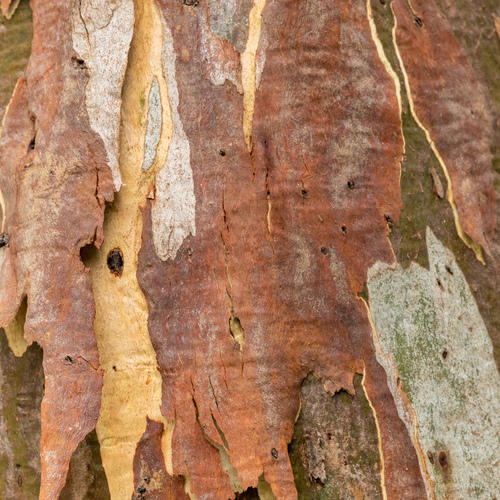
Pagination links
Findings from consultations with key stakeholders in the Aboriginal and Torres Strait Islander sector
Findings from consultations with key stakeholders in the Aboriginal and Torres Strait Islander sector
We identified 14 topics from the consultations with key stakeholders from the Aboriginal and Torres Strait Islander sector.
These topics capture:
- the priorities important to Aboriginal and Torres Strait Islander stakeholders
- ideas for how Council can progress reconciliation locally.
These findings helped us develop the vision, themes, strategic objectives and actions in this Strategy.
Topic 1 – Improve Aboriginal and Torres Strait Islander cultural awareness in Council and in the community
One suggestion to progress this work included providing cultural awareness training and activities for staff, councillors and the wider community.
Topic 2 – Acknowledge and/or celebrate important dates
These dates could include:
- NAIDOC Week
- National Reconciliation Week
- National Sorry Day
- Aboriginal Children’s Day.
We received suggestions to support cultural immersion events and activities such as:
- storytelling sessions
- book readings
- yarning circles with the local Aboriginal and Torres Strait Islander communities
- celebrations of the Stolen Generations' resilience and achievements through art, film and guest speakers at community events
- make sure Aboriginal and Torres Strait Islander Elders and peoples are invited to lead, plan, take part and attend.
Topic 3 – Acknowledge Traditional Owners, the Wurundjeri Woi-wurrung Cultural Heritage Aboriginal Corporation, in Council and across the community
We received suggestions to find more ways to respectfully and appropriately acknowledge the Wurundjeri Woi-wurrung Cultural Heritage Aboriginal Corporation (WWCHAC). This can help the community to build connections to places and spaces.
For example:
- use Aboriginal language to name places and spaces in the community
- make signs and plaques to acknowledge the Traditional Owners
- fly the Aboriginal and Torres Strait Islander flags
- include written Acknowledgements of Traditional Owners in Council’s print and digital communications.
Topic 4 – Develop a better understanding of the local Aboriginal and Torres Strait Islander peoples and communities in Boroondara
This will help make sure that Council services and programs are delivered in a culturally safe way that is:
- responsive
- targeted
- welcoming
- respectful.
Suggestions included developing a profile of the local Boroondara Aboriginal and Torres Strait Islander communities. The profile would have more information than the ABS Census data.
For example, we would collect information about:
- Aboriginal Community Controlled Organisations and businesses
- Aboriginal and Torres Strait Islander peoples working within the City of Boroondara.
Topic 5 – Acknowledge and celebrate local Aboriginal and Torres Strait Islander stories, histories, cultures and peoples
Acknowledge and celebrate Aboriginal and Torres Strait Islander stories, histories, cultures and peoples all year round and not just on important dates.
Suggestions included:
- providing spaces in the community that include reflections of Aboriginal and Torres Strait Islander cultures and histories. These spaces could do this through visual arts or reflective landscaping
- inviting Aboriginal and Torres Strait Islander guest speakers from different backgrounds to speak at Council events during the year
- talking with Aboriginal and Torres Strait Islander peoples and the community about truth-telling.
Topic 6 – Strengthen relationships and collaborate with the Traditional Owners, the WWCHAC
Suggestions for ways to continue building a strong working relationship with the WWCHAC included:
- meeting regularly
- formalising the way we work together.
Topic 7 – Create and strengthen relationships with Aboriginal and Torres Strait Islander stakeholders and peoples. Find more opportunities for collaboration
Reconciliation actions should focus on respectful and genuine two-way relationships. Developing these relationships can take time as strong relationships are built on trust and respect.
Actively engaging Aboriginal and Torres Strait Islander peoples and stakeholders in the development of the Boroondara Reconciliation Strategy was highlighted as important.
Suggestions to improve Council’s engagement and communication about the delivery of the Strategy included:
- keeping Aboriginal and Torres Strait Islander peoples updated on Council’s reconciliation progress
- updating Council’s reconciliation progress on our website
- inviting Aboriginal Community Controlled organisations to take part in local Council events and activities during the year.
Topic 8 – Participate in developing and delivering culturally safe spaces and places for Aboriginal and Torres Strait Islander peoples in the Inner East
Culturally safe meeting places are important to:
- practice cultures
- celebrate community achievements
- promote and support cultural connections to land, waterways and each other.
We received suggestions to:
- deliver programs and activities at the Mullum Mullum Indigenous Gathering Place’s possible new Inner East Aboriginal Community Hub
- promote important Aboriginal sites in Boroondara with approval from WWCHAC.
Topic 9 – Find opportunities for collaboration with local community groups, community services and schools to progress reconciliation actions
This could include:
- cultural awareness training
- capacity building workshops
- supporting networking and collaboration for:
- community groups
- organisations
- educational providers
- Aboriginal and Torres Strait Islander communities.
Topic 10 – Create a governance structure to oversee implementation of the Strategy and make sure the voices of Aboriginal and Torres Strait Islander people are heard
The voices of Aboriginal and Torres Strait Islander communities should be heard every step of the way. This includes understanding how self-determination will drive action.
Suggestions included:
- developing a process for Aboriginal and Torres Strait Islander communities to give feedback to Council
- having small yarning sessions with Aboriginal and Torres Strait Islander stakeholders to build strong relationships
- supporting Aboriginal and Torres Strait Islander peoples to have a say on other committees and working groups in Council.
Topic 11 – Promote and support buying goods and services from Victorian Aboriginal and Torres Strait Islander businesses
This will help to improve:
- Aboriginal employment
- participation of Aboriginal businesses in the economy.
Suggestions included promoting the strengths and successes of local Aboriginal businesses and entrepreneurs.
Topic 12 – Promote and support Aboriginal and Torres Strait Islander employment within Council. Make sure the organisation is culturally welcoming
Support the employment of Aboriginal and Torres Strait Islander staff within Council. Suggestions included developing a workforce strategy for Council.
Topic 13 – Contribute and support state-wide advocacy efforts with Aboriginal and Torres Strait Islander stakeholders. These efforts will focus on Aboriginal and Torres Strait Islander health inequality and rights
Keep up-to-date data about Aboriginal and Torres Strait Islander communities.
This includes:
- economic data
- physical and mental health data
- environmental data
- issues happening in Aboriginal and Torres Strait Islander communities.
This will help Council to advocate in consultation with WWCHAC and other local Aboriginal and Torres Strait Islander stakeholders.
Topic 14 – Improve Aboriginal and Torres Strait Islander peoples’ accessibility to Council’s services, programs and activities
Improving accessibility will help make sure Council’s services, programs and activities:
- are inclusive
- support the needs of Aboriginal and Torres Strait Islander peoples.
Pagination links
Findings from the community pulse check survey
Findings from the community pulse check survey
We received 480 responses to our community pulse check survey. We asked our community:
- Why is reconciliation in Boroondara important to you?
- What specific actions would you like Council to take to progress reconciliation locally?
We also asked people to:
- rate their level of knowledge about the histories and cultures of Aboriginal and Torres Strait Islander peoples in Australia and Boroondara
- tell us if they knew who the Traditional Owners are in Boroondara.
The survey results gave us an idea on how the community is feeling about reconciliation.
Why is reconciliation in Boroondara important to you?
While the survey question didn't ask if reconciliation is important, we found out from the written responses that:
- 78% of people who responded to the survey support reconciliation in Boroondara
- 19% of people who responded to the survey said that reconciliation is not important
- 3% of people who responded to the survey were not sure about how important reconciliation is.
We also identified 13 key themes from the responses to this first question. It’s encouraging and positive to see that these themes strongly support what we heard in our consultations with Aboriginal and Torres Strait Islander stakeholders.
| Themes | Count | % |
|---|---|---|
| Reconciliation is the right thing to do. | 124 | 26% |
| We need to acknowledge the past. We also need to improve visibility of Aboriginal and Torres Strait Islander peoples’ cultures and histories through education and awareness. | 117 | 24% |
|
Justice is important, including:
|
115 | 24% |
| Local communities, including Council, should lead the reconciliation process. | 93 | 19% |
| It’s important to respect Aboriginal and Torres Strait Islander peoples’ cultures. | 91 | 19% |
| Reconciliation is not important. | 91 | 19% |
| It’s important to recognise Traditional Owners and their unique relationship to the land. | 84 | 18% |
| Reconciliation is important for the future and shared national identity. | 79 | 16% |
| Reconciliation is important for building an inclusive community for all. | 38 | 8% |
| Reconciliation is important for healing trauma and damage. | 35 | 7% |
| Personal connection to the importance of reconciliation. | 33 | 7% |
| Include Aboriginal and Torres Strait Islander peoples' voices in decision-making. | 24 | 5% |
| Not sure how to feel about reconciliation. | 15 | 3% |
The total is more than 100% because people who responded to the survey could say more than one theme for why reconciliation is important in Boroondara.
What specific actions would you like Council to take to progress reconciliation locally?
People who responded to the survey were also asked about actions they would like to see Council take to progress reconciliation in Boroondara. We identified key actions from their responses. We put together a list of actions suggested by at least 25 people who responded to the survey (5% of the sample). These actions strongly support what we heard in our consultations with Aboriginal and Torres Strait Islander stakeholders.
| Action | Count | % |
|---|---|---|
|
Help to educate and raise awareness about Aboriginal and Torres Strait Islander cultures and histories for all age groups. This could be through:
|
175 | 36% |
| Use signs, plaques and information boards, such as stories and history trails, on Council buildings and in public spaces. Use traditional Aboriginal names, as well as English and Aboriginal languages, to name buildings and open spaces, such as streets and parks. | 138 | 29% |
|
Use the Acknowledgement of Traditional Owners/Welcome to Country:
|
107 | 22% |
| Engage with Aboriginal and Torres Strait Islander peoples about things that are important to them. | 90 | 19% |
|
Support events that are led by Aboriginal and Torres Strait Islander peoples. For example:
|
90 | 19% |
| Include Aboriginal and Torres Strait peoples in Council decision-making processes. | 68 | 14% |
| Fly Aboriginal and Torres Strait Islander flags at Council buildings. | 64 | 13% |
|
Promote Aboriginal and Torres Strait Islander art in:
|
43 | 9% |
| Provide opportunities (spaces and events) to bring together Aboriginal and Torres Strait Islander peoples and the non-Aboriginal community. | 39 | 8% |
|
Celebrate important dates for Aboriginal and Torres Strait Islander peoples, such as:
|
30 | 6% |
| Create a Reconciliation Action Plan and other relevant policy documents. | 28 | 6% |
| Increase employment opportunities for Aboriginal and Torres Strait Islander peoples. | 25 | 5% |
The total is more than 100% because people who responded to the survey could say more than one action to progress reconciliation in Boroondara.
The findings above show that there is a strong overlap of common themes and priorities from the different phases of community consultations. It also shows there is support from the Aboriginal and Torres Strait Islander community and the broader community to work in partnership together to progress reconciliation locally.
Pagination links
Key Themes and Strategic Objectives
Key Themes and Strategic Objectives
The responses from our 3 stages of consultation revealed strong support for similar themes and priorities. Using these responses and our own research, we identified 3 key themes and 14 areas for action. We used this information to develop the Boroondara Reconciliation Strategy (the Strategy).
The 3 key themes are:
- Understand, Acknowledge and Respect: recognise that understanding, acknowledging and respecting Aboriginal and Torres Strait Islander histories, cultures and peoples is fundamental to being able to meaningfully contribute to the reconciliation process.
- Relationships and Partnerships: acknowledges the broader community has a key role to play in progressing reconciliation and that to do this we need to develop and strengthen relationships with Aboriginal and Torres Strait Islander organisations so we can work together.
- Governance and Leadership: working together across Council to progress reconciliation and providing opportunities for Aboriginal and Torres Strait Islander peoples to have a voice to inform Council decision making.
These 3 key themes are all necessary and important to progress reconciliation locally.
Under each theme, we have developed a strategic objective. These strategic objectives outline what the community wants us to achieve over the next 4 years. Based on these objectives, we have also developed a number of focus areas for action. These focus areas explain how we aim to achieve our strategic objectives.
Our Implementation Plan outlines the specific actions we will take over the next 4 years. We have included this with our Strategy
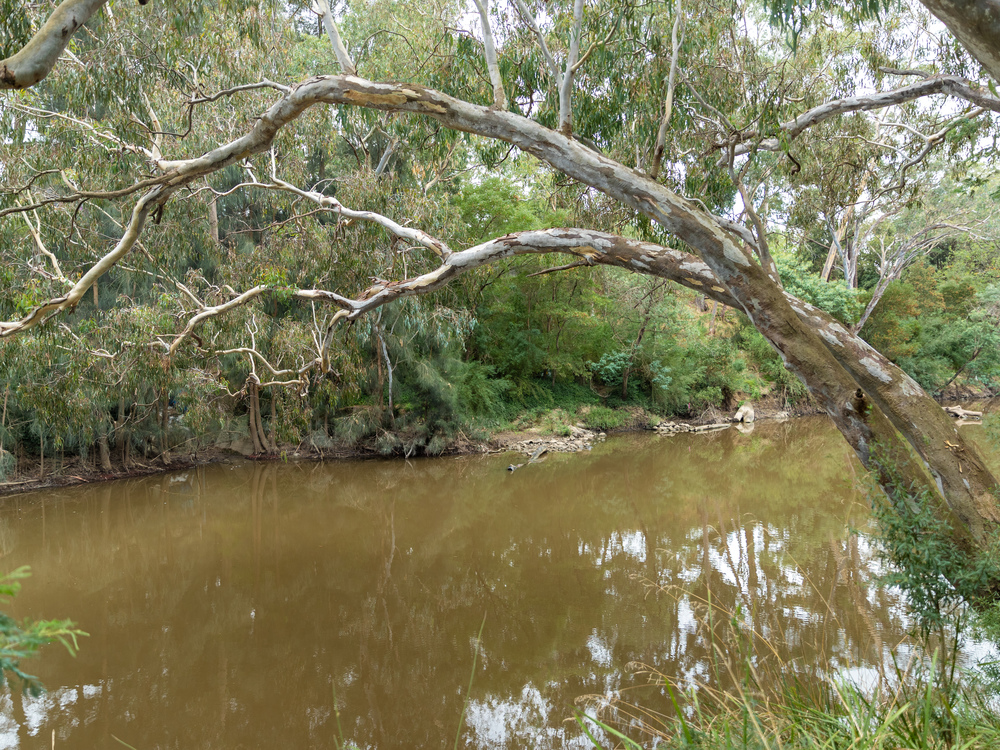
Pagination links
Theme 1: Understand, Acknowledge and Respect
Theme 1: Understand, Acknowledge and Respect
Strategic Objective 1
Build awareness and understanding of Aboriginal and Torres Strait Islander histories, cultures and peoples so we can contribute towards the reconciliation process and acknowledge and celebrate the resilience, strengths and contributions Aboriginal and Torres Strait Islander peoples make to the community.
Focus areas for action
- Improve Aboriginal and Torres Strait Islander cultural awareness within Council and in the community.
- Acknowledge and/or celebrate dates of significance to Aboriginal and Torres Strait Islander peoples.
- Acknowledge the Traditional Owners, Wurundjeri Woi-wurrung Cultural Heritage Aboriginal Corporation, within Council and across the municipality.
- Council to develop a better understanding of the local Aboriginal and Torres Strait Islander peoples and communities in Boroondara.
- Acknowledge and celebrate local Aboriginal and Torres Strait Islander stories, histories, cultures and peoples.
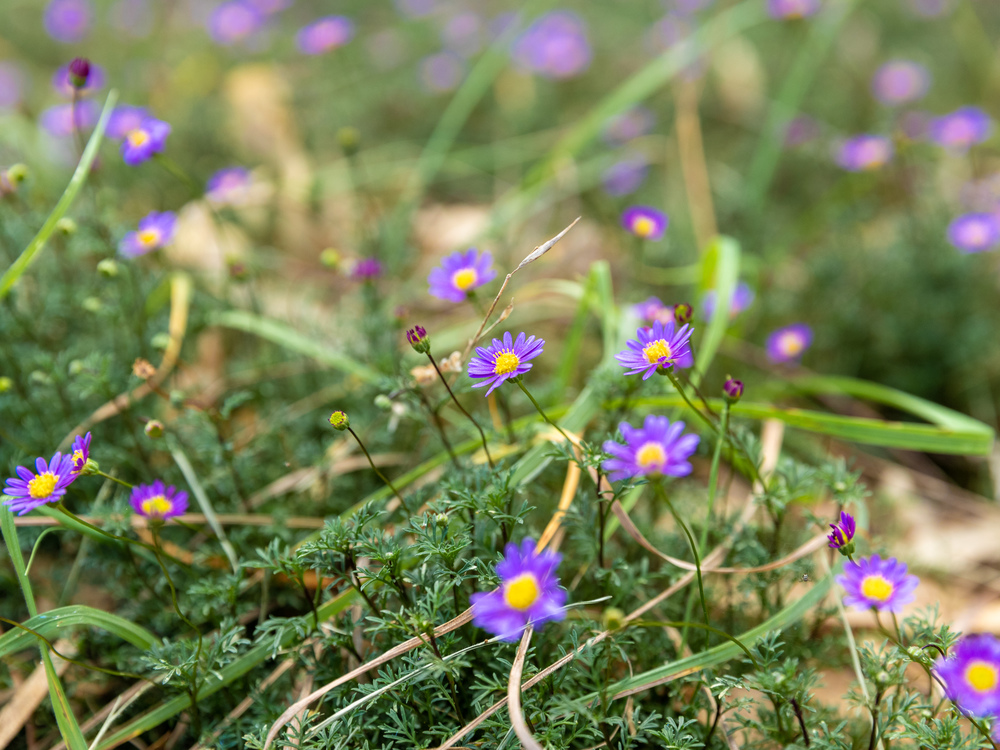
Pagination links
Theme 2: Relationships and Partnerships
Theme 2: Relationships and Partnerships
Strategic Objective 2
Create and strengthen reciprocal relationships between Traditional Owners and other Aboriginal and Torres Strait Islander organisations and peoples, Council, and the broader community so we can progress reconciliation initiatives together.
Focus areas for action
- Strengthen relationships and collaborate with the Traditional Owners, Wurundjeri Woi-wurrung Cultural Heritage Aboriginal Corporation.
- Establish and strengthen relationships with Aboriginal and Torres Strait Islander stakeholders and peoples and identify opportunities for collaboration.
- Participate in the development and delivery of spaces and places for Aboriginal and Torres Strait Islander community members in the Inner East.
- Identify opportunities for collaboration with community groups and service providers, networks and local schools to progress reconciliation initiatives locally.
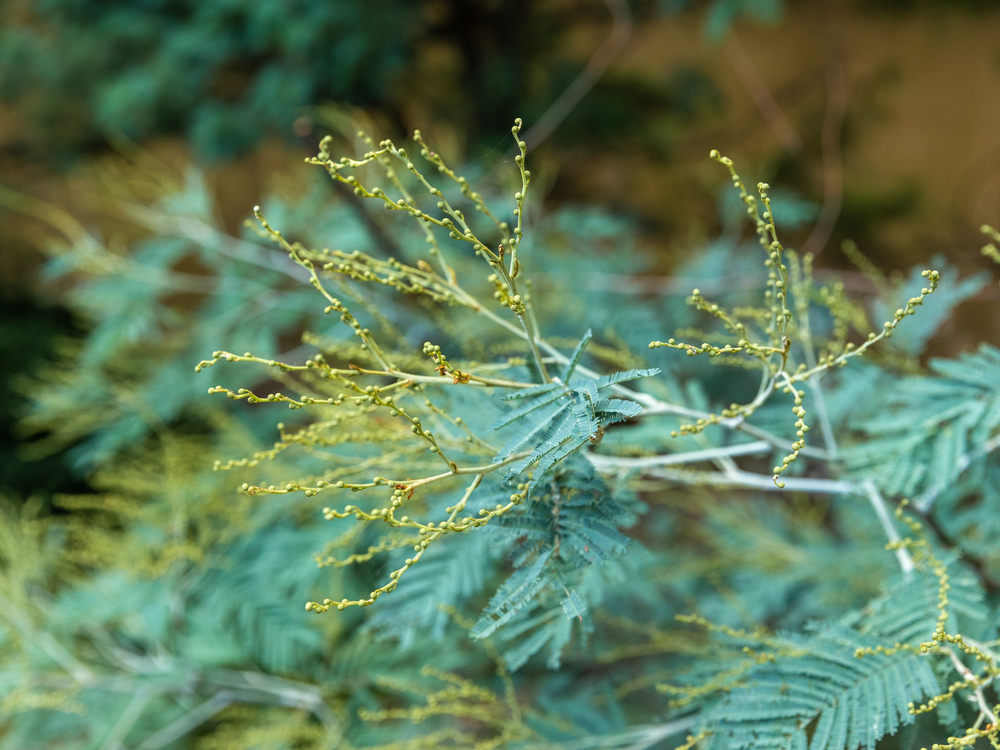
Pagination links
Theme 3: Governance and Leadership
Theme 3: Governance and Leadership
Strategic Objective 3
Provide a whole of Council response to reconciliation and enable the voice of Aboriginal and Torres Strait islander peoples to inform Council decision making to support equitable and inclusive opportunities and participation in the community.
Focus areas for action
- Convene an internal Council advisory committee and stakeholder network to support implementation of the strategy
- Promote and support Aboriginal and Torres Strait Islander employment, volunteering and traineeship opportunities and ensure the organisation is culturally welcoming
- Support the procurement of goods and services from Victorian Aboriginal and Torres Strait Islander businesses
- Contribute and support state-wide advocacy efforts in consultation with Aboriginal and Torres Strait Islander stakeholders to address health inequities and the rights of Aboriginal and Torres Strait Islander peoples
- Ensure accessibility to Council services and activities to ensure they are inclusive and support the needs of Aboriginal and Torres Strait Islanders peoples.
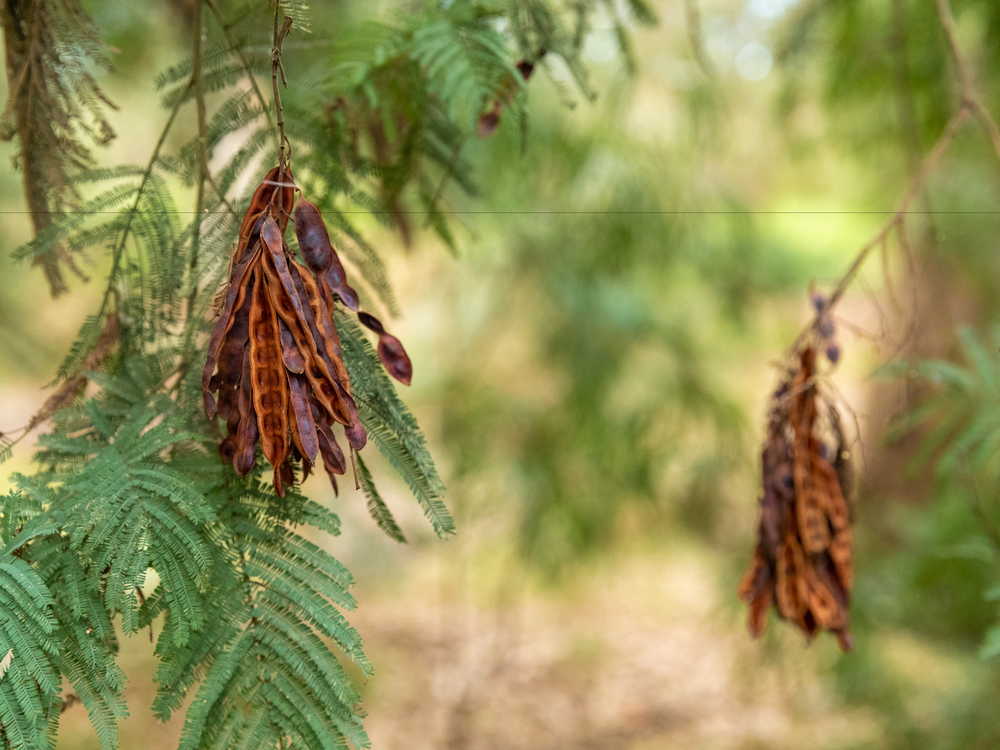
Pagination links
Implementing, monitoring and evaluation
Implementing, monitoring and evaluation
We are committed to collaborating with the Wurundjeri Woi-wurrung Cultural Heritage Aboriginal Corporation (WWCHAC).
We are also committed to working with:
- other key Aboriginal and Torres Strait Islander stakeholders
- community groups
- organisations
- the wider community.
Together we will implement, monitor and evaluate the actions in the Boroondara Reconciliation Strategy (the Strategy).
We have set up an Internal Boroondara Reconciliation Advisory Committee (the Committee) to support Council officers in implementing the Strategy. At least twice a year, the Committee will invite Elders and staff from the WWCHAC to meet. This will allow Council officers to provide updates and get feedback from the WWCHAC. If needed, the Committee will also invite other external Aboriginal and Torres Strait Islander community organisations, individuals and representatives from community groups and networks. It will also look at data, research and what the community has said.
The Committee will use all this information to provide feedback and advice about the development and implementation of the Strategy.
We will regularly review the actions in the Strategy to make sure they stay relevant and achievable. We will use our internal corporate reporting system to monitor implementation of the Strategy’s actions and will publish updates in Council’s annual report.
Accountability
If you have questions or feedback about our Strategy, please contact our Social Inclusion Policy and Project Officer, Liz O'Loughlin.
Phone: (03) 9278 4693
Email: [email protected]
